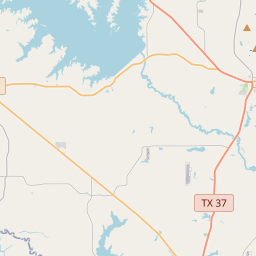First Baptist Church of Quitman
Historical marker location:






One of the earliest churches in Wood County. Organized Nov. 16, 1850, by pioneer settlers in a meeting moderated by a Cumberland Presbyterian, the Rev. Simon W. Weaver. Charter members included: Ursula Benton; M. M. and Mary Bigham; James, Robert, Silas, Mary A. L., and Elizabeth Duncan; Joseph, Alexander, and Martha Greer; Peter, Frances, and Mary Rozell; James N. Stedman; and John and Augusta Williams.
Worship services were held in homes and open air in early days. A 2-story building with belfry was erected at College and Good streets in 1855 by the Presbyterians and Masons. In 1865 the Masons bought that building and made it available to all faiths until its razing in 1900. On same lot, Baptists and Masons erected another 2-story frame edifice. Under capable pastors, congregation grew. A 1929 building at Lane and College streets was replaced by the present plant in 1952. This bell (used from 1855 to 1929) is preserved as an historical relic.
The pulpit here has been filled by notable guests, including the Rev. George W. Truett, world-renowned minister of Dallas. This is also noted as the home church of James Stephen Hogg (1851-1906), the first native-born Governor of Texas. (1970)
As one of the most visible programs of the Texas Historical Commission (THC), historical markers commemorate diverse topics in Texas history, including: the history and architecture of houses, commercial and public buildings, religious congregations, and military sites; events that changed the course of local and state history; and individuals who have made lasting contributions to the state, community organizations, and businesses.
Texas has been a major oil-producing state for over a century. The first big oil discovery in Texas was the Spindletop field near Beaumont in 1901, which set off a massive oil boom that transformed the state's economy and made Texas one of the wealthiest states in the country.
In the early 1800s, the region attracted settlers from the United States who were drawn to the lush forests and abundant resources. The first permanent European-American settlement was established in 1846, and it was named Quitman after John A. Quitman, a prominent politician of that time.
During the Civil War, Wood County played a significant role in supporting the Confederacy. Many residents enlisted in the Confederate Army, and the area became a center for military recruitment and training. After the war, the county suffered economically, but with the introduction of the railroad in the late 19th century, the economy began to recover.
Wood County's economy primarily relied on agriculture, with the growth of cotton, corn, and timber industries. The establishment of sawmills and the development of the timber industry brought prosperity to the area. In the early 20th century, the discovery of oil and gas reserves further fueled the county's economic development.
Today, Wood County continues to be an important agricultural and industrial center in Texas. The county's history is evident in its charming small towns, historic sites, and natural beauty. The strong sense of community and appreciation for the region's heritage are still evident today, making Wood County a vibrant and inviting place to visit or live.
Wood County Timeline
This timeline provides a glimpse into the major events and milestones that have shaped the history of Wood County, Texas.
- 1850: Wood County is established by the Texas legislature.
- 1852: The first courthouse in Wood County is built in Quitman.
- 1860: The population of Wood County reaches 4,867.
- 1875: The railroad reaches Wood County, boosting economic growth.
- 1895: The county seat is moved from Quitman to Mineola.
- 1920: The population of Wood County peaks at 19,109.
- 1930: The Great Depression hits Wood County, causing economic hardship.
- 1958: Lake Holbrook is completed, providing a recreational area for residents.
- 1970: Wood County's population decreases to 12,230.
- 1983: Holly Lake Ranch, a gated residential community, is established in Wood County.
- 2000: The population of Wood County surpasses 37,000.
- 2019: Wood County experiences steady growth and continues to be a thriving community.